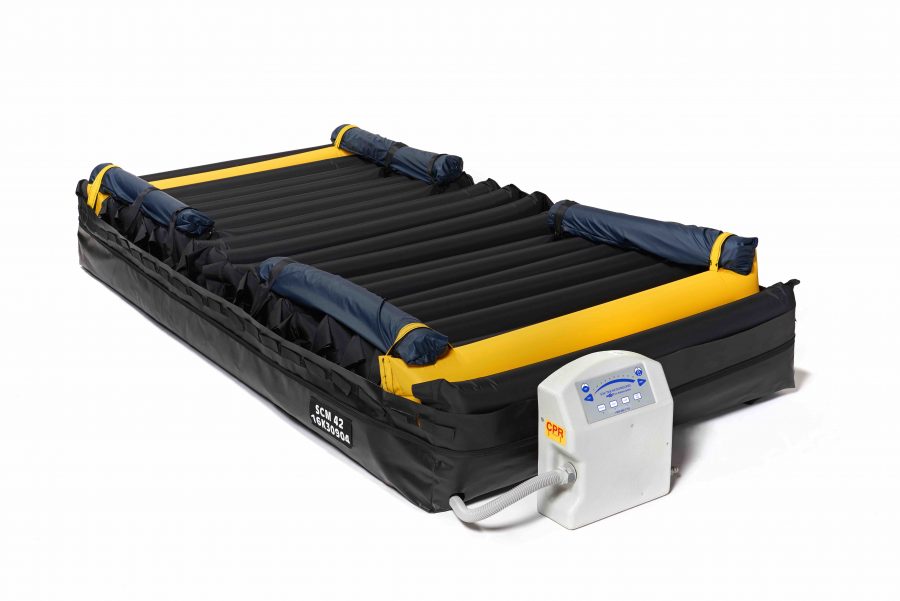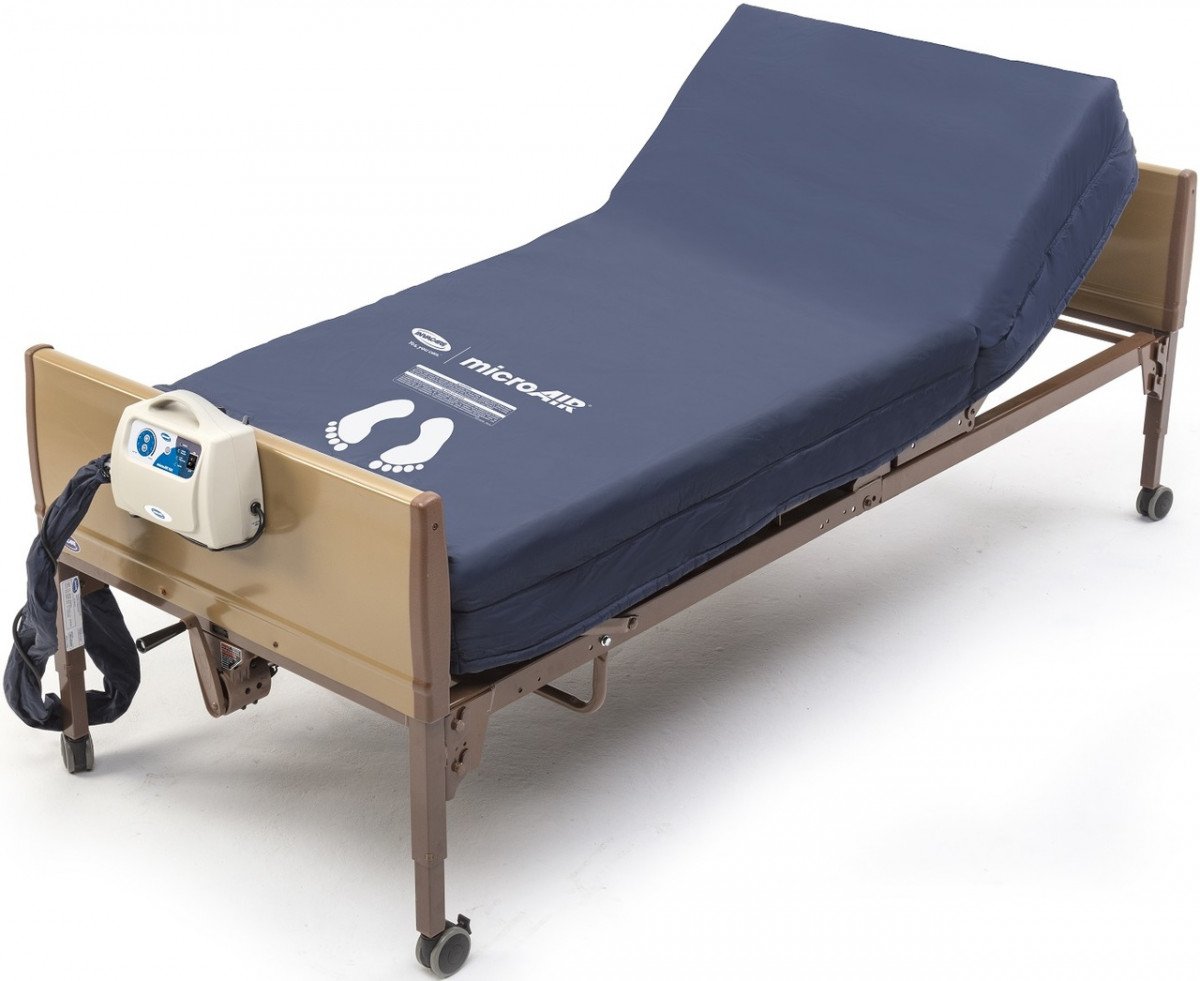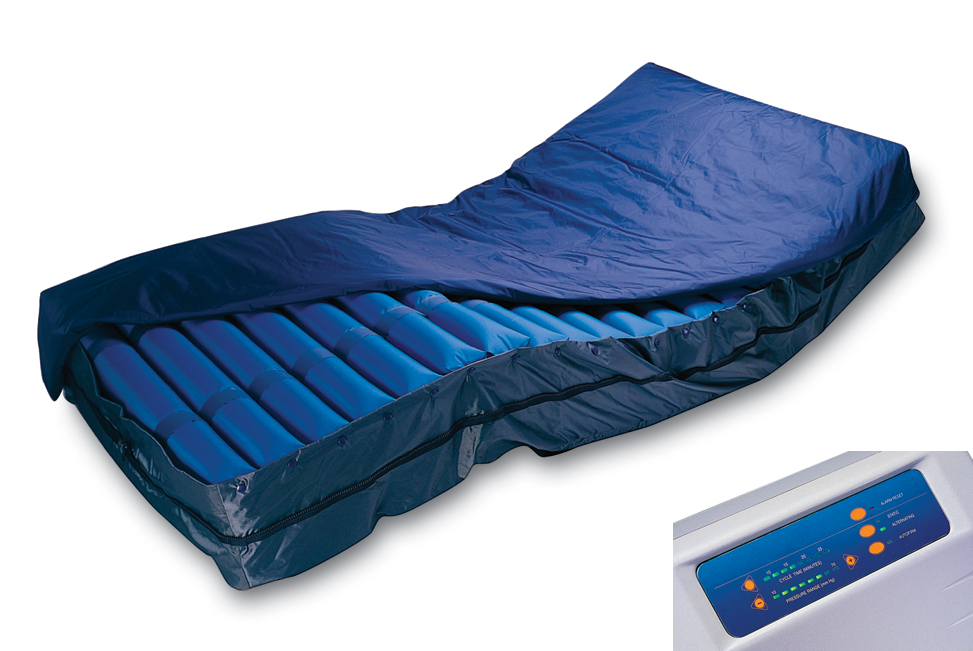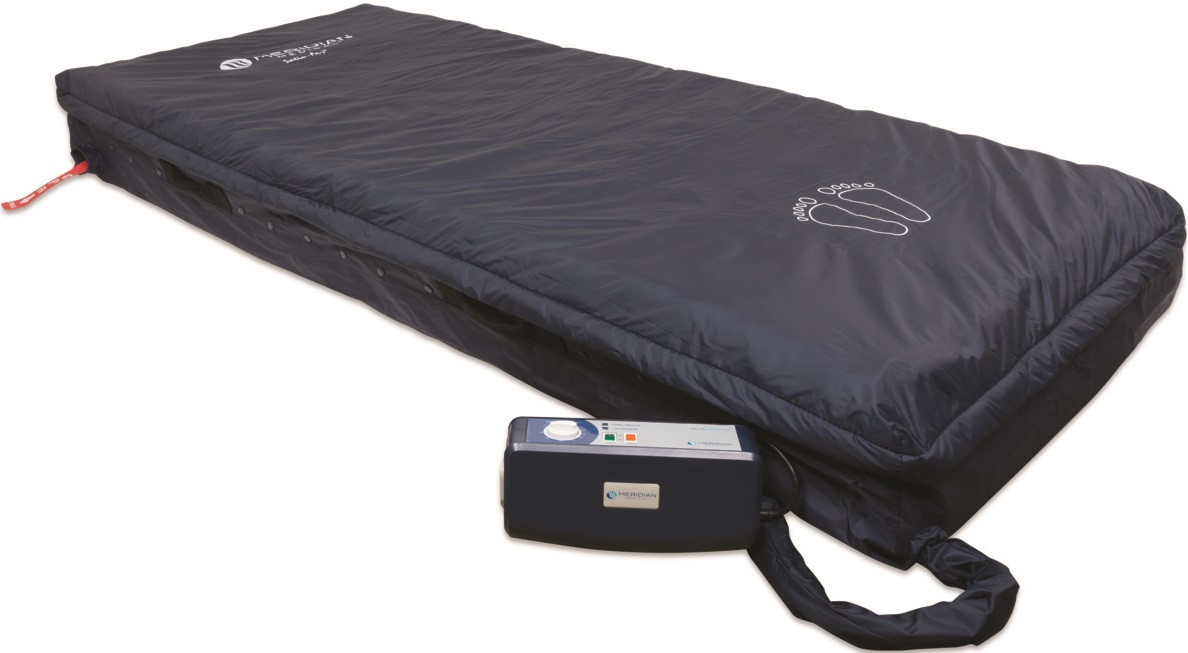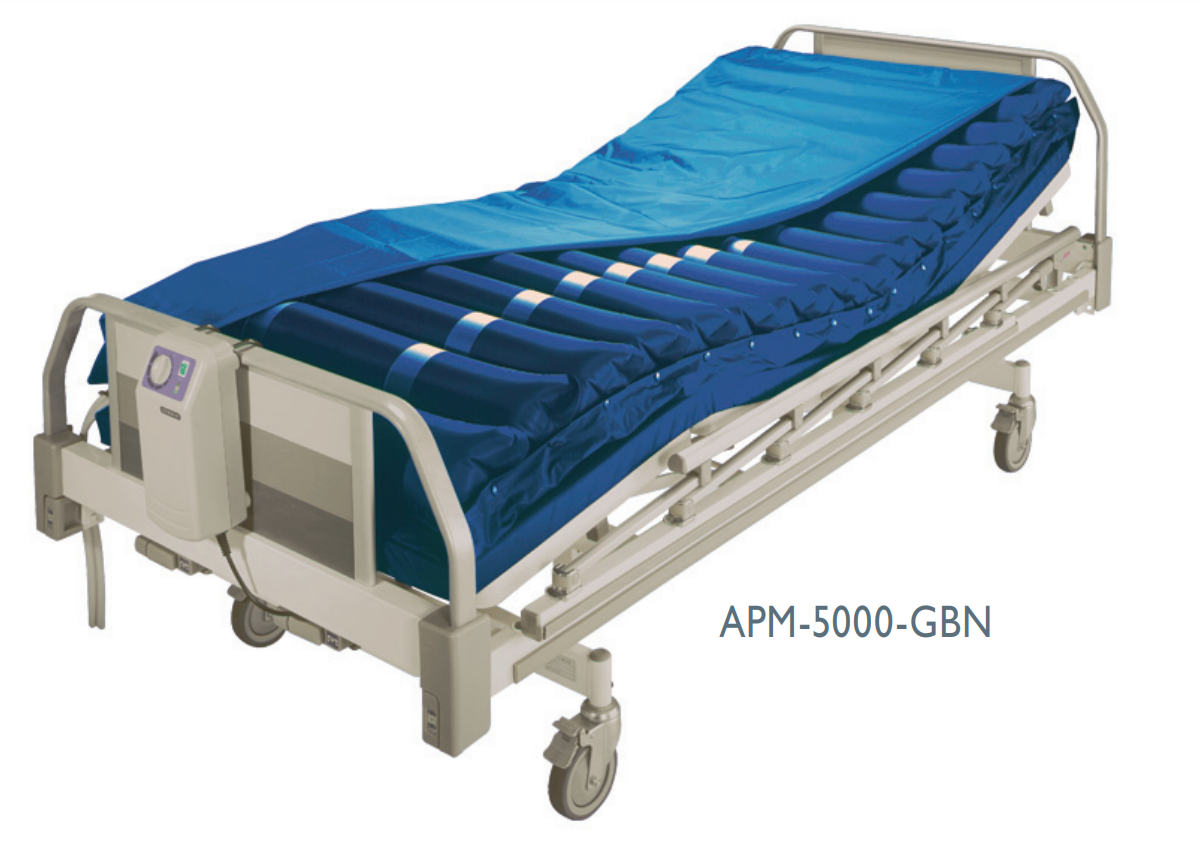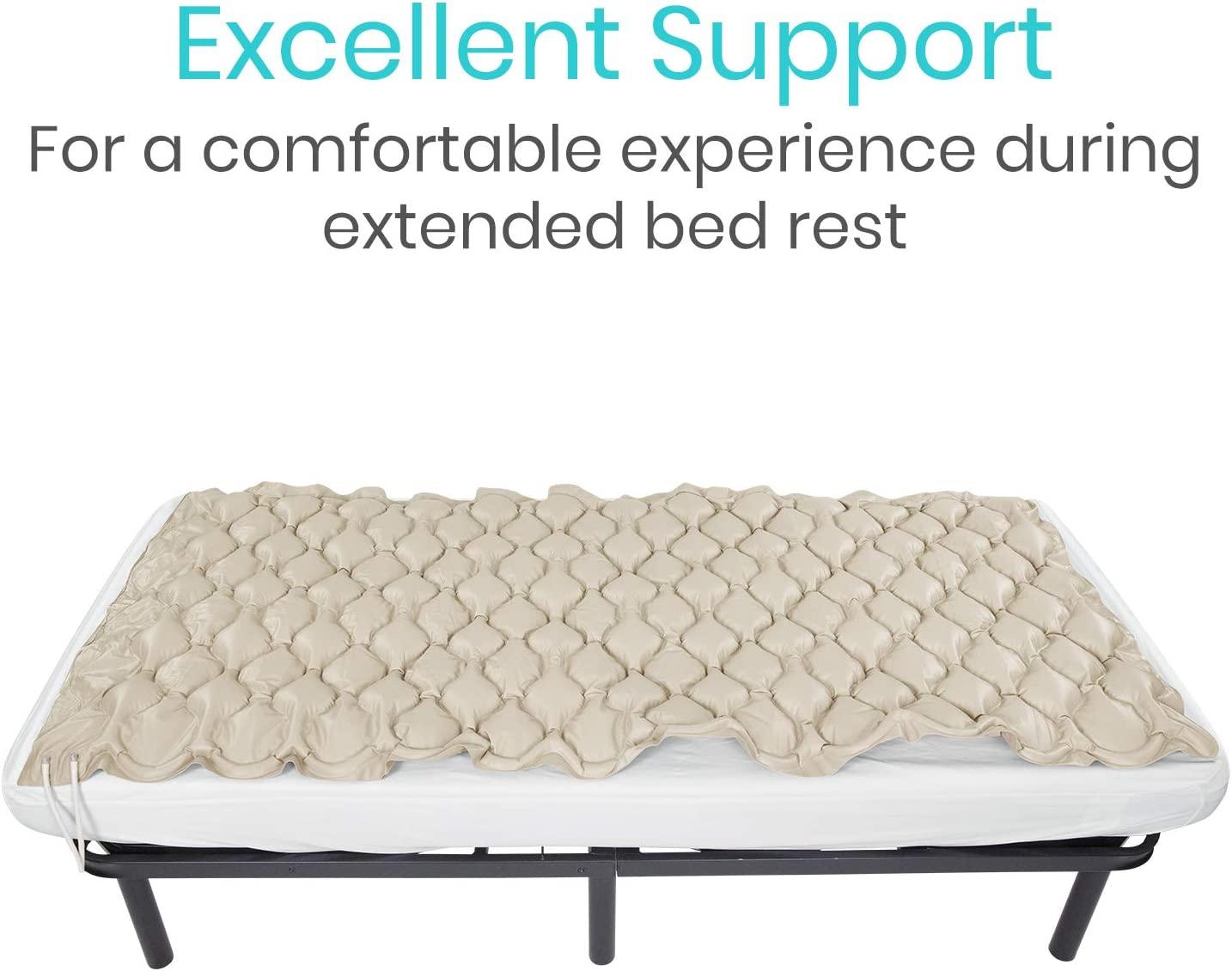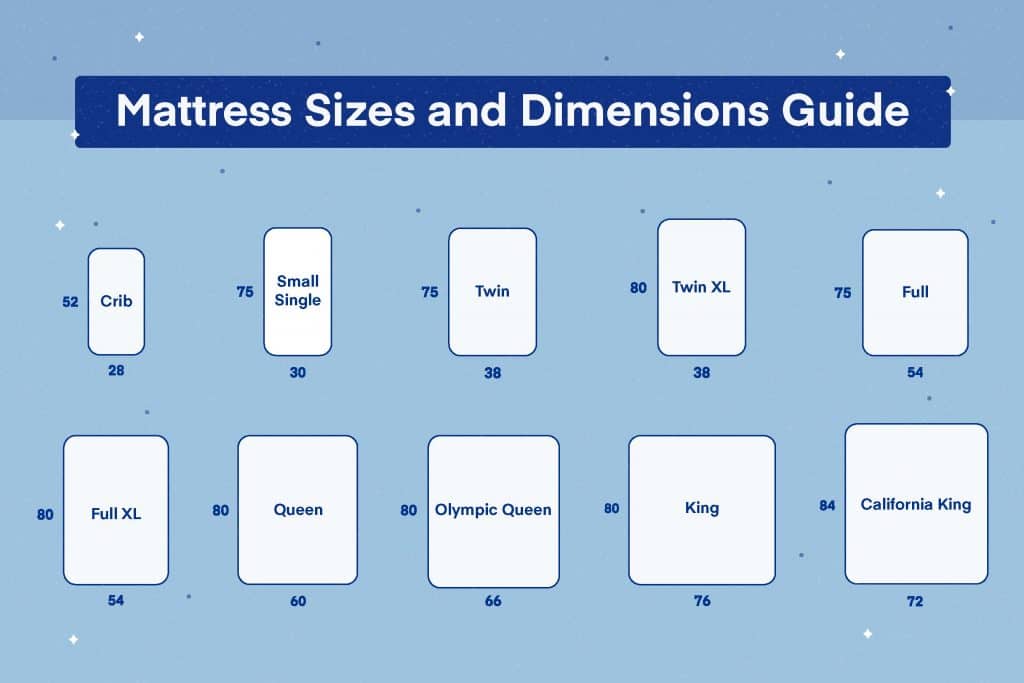Low Air Loss Mattress for Pressure Ulcers
Low air loss mattresses are often recommended for patients who are at risk of developing pressure ulcers. These mattresses are designed to reduce pressure on the body by allowing air to circulate through the mattress and under the patient's body. The low air loss feature helps to distribute weight more evenly and prevent the build-up of pressure in any one area, which can lead to the development of pressure ulcers.
One of the main benefits of a low air loss mattress for pressure ulcers is its ability to reduce the risk of developing these painful and potentially dangerous wounds. The constant flow of air helps to keep the skin cool and dry, preventing moisture from building up and reducing the risk of skin breakdown. This is especially important for patients who are bedridden and may not be able to shift their weight regularly.
Alternating Pressure for Pressure Ulcers
Alternating pressure mattresses work differently from low air loss mattresses. Instead of a continuous flow of air, they use a series of air cells that inflate and deflate in a rotating pattern. This creates a pulsating effect that helps to stimulate blood flow and prevent pressure ulcers from forming.
Some studies have shown that alternating pressure mattresses may be more effective than low air loss mattresses in preventing pressure ulcers. This is because the regular changes in pressure help to reduce the shear forces that can damage the skin and increase the risk of developing pressure ulcers. However, more research is needed to determine the best option for each individual patient.
Comparison of Low Air Loss Mattress and Alternating Pressure
When it comes to choosing between a low air loss mattress and an alternating pressure mattress, there are a few factors to consider. The main difference between the two is the way they distribute pressure and support the body. Low air loss mattresses provide a more continuous and even distribution of pressure, while alternating pressure mattresses offer a pulsating and changing pressure pattern.
Another factor to consider is the cost of each type of mattress. Low air loss mattresses tend to be more expensive, but they may also have a longer lifespan. Alternating pressure mattresses, on the other hand, are more affordable but may need to be replaced more frequently.
Ultimately, the best option will depend on the individual patient's needs and preferences. It's important to consult with a healthcare professional to determine the most suitable option for each patient.
Benefits of Low Air Loss Mattress
In addition to its effectiveness in preventing pressure ulcers, low air loss mattresses offer a range of benefits for patients. These include:
Benefits of Alternating Pressure
Alternating pressure mattresses also offer a range of benefits for patients, including:
Low Air Loss Mattress for Bedridden Patients
Bedridden patients are at a higher risk of developing pressure ulcers due to their limited mobility. This is why low air loss mattresses are often recommended for these patients. The constant flow of air helps to keep the skin dry and cool, reducing the risk of skin breakdown and pressure injuries.
In addition, the adjustable pressure settings of low air loss mattresses make them suitable for patients of all weights and sizes. This ensures that the patient's body is properly supported and pressure is evenly distributed, reducing the risk of developing pressure ulcers even further.
Alternating Pressure for Bedridden Patients
Bedridden patients can also benefit from alternating pressure mattresses. The regular changes in pressure can help to prevent pressure ulcers from forming and promote better blood flow and oxygenation. This is crucial for bedridden patients who may not be able to change positions frequently to relieve pressure on certain areas of their body.
In addition, the adjustable pressure settings of alternating pressure mattresses make them suitable for a wide range of patient needs. This makes them a versatile option for bedridden patients who may have varying medical conditions and pressure ulcer risks.
Low Air Loss Mattress for Wound Healing
Low air loss mattresses can also be beneficial for patients who are recovering from wounds, surgeries, or other injuries. The constant flow of air helps to promote better blood circulation and oxygenation, which is crucial for wound healing. In addition, the even distribution of pressure helps to prevent any additional damage to the wound and surrounding skin.
The adjustable pressure settings of low air loss mattresses also make them suitable for patients with different types of wounds and levels of sensitivity. This makes them a versatile option for wound healing in both hospital and home settings.
Alternating Pressure for Wound Healing
Similarly, alternating pressure mattresses can also be beneficial for wound healing. The regular changes in pressure help to stimulate blood flow and promote better oxygenation, which is crucial for the healing process. In addition, the pulsating effect of the mattress can help to reduce pain and discomfort for patients with wounds.
As with low air loss mattresses, the adjustable pressure settings of alternating pressure mattresses make them suitable for different types of wounds and levels of sensitivity. This makes them a versatile option for wound healing in both hospital and home settings.
Low Air Loss Mattress for Prevention of Pressure Injuries
Aside from pressure ulcers, low air loss mattresses can also help to prevent other types of pressure injuries. These may include skin tears, blisters, and abrasions that can occur when the skin is under constant pressure or friction. The even distribution of pressure and the ability to adjust the pressure settings make low air loss mattresses effective in preventing these types of injuries.
For patients who are at risk of developing pressure injuries, a low air loss mattress can provide the necessary support and protection for their skin.
Alternating Pressure for Prevention of Pressure Injuries
Similarly, alternating pressure mattresses can also help to prevent pressure injuries. The regular changes in pressure help to reduce the risk of skin breakdown and damage, which can lead to pressure injuries. In addition, the pulsating effect of the mattress can help to improve blood flow and reduce the risk of developing deep tissue injuries.
For patients who are at risk of developing pressure injuries, an alternating pressure mattress can provide the necessary support and protection for their skin.
Low Air Loss Mattress for Hospital Use
Low air loss mattresses are commonly used in hospitals for patients who are at risk of developing pressure ulcers or who are recovering from wounds or surgeries. The adjustable pressure settings make them suitable for a wide range of patient needs, and their effectiveness in preventing pressure ulcers can help to reduce healthcare costs and improve patient outcomes.
In addition, the versatility of low air loss mattresses makes them suitable for use in various hospital departments and settings, from intensive care units to long-term care facilities.
Alternating Pressure for Hospital Use
Alternating pressure mattresses are also commonly used in hospitals for patients who are at risk of developing pressure ulcers or who are recovering from wounds or surgeries. The regular changes in pressure and the pulsating effect can help to improve blood flow and reduce the risk of developing pressure injuries.
Like low air loss mattresses, the versatility of alternating pressure mattresses makes them suitable for use in various hospital departments and settings.
Low Air Loss Mattress for Home Use
Low air loss mattresses can also be used in home settings for patients who are at risk of developing pressure ulcers or who are recovering from wounds. These mattresses are often recommended for elderly patients or those with limited mobility who spend a lot of time in bed. The adjustable pressure settings and versatility of low air loss mattresses make them a practical and effective option for home use.
Alternating Pressure for Home Use
Similarly, alternating pressure mattresses can also be used in home settings for patients who are at risk of developing pressure ulcers or who are recovering from wounds. The regular changes in pressure and pulsating effect make them a suitable option for preventing pressure injuries and promoting wound healing in the comfort of one's home.
Low Air Loss Mattress for Elderly Patients
Elderly patients are at a higher risk of developing pressure ulcers due to their fragile skin and decreased mobility. Low air loss mattresses can provide the necessary support and pressure redistribution to prevent these injuries from occurring. The adjustable pressure settings and versatility of these mattresses make them a practical choice for elderly patients who may have varying medical needs.
Alternating Pressure for Elderly Patients
Alternating pressure mattresses can also be beneficial for elderly patients. The regular changes in pressure and pulsating effect can help to improve blood flow and reduce the risk of developing pressure injuries. In addition, the adjustable pressure settings make these mattresses suitable for a wide range of elderly patients, regardless of their weight or skin sensitivity.
Low Air Loss Mattress for Pressure Redistribution
One of the main benefits of low air loss mattresses is their ability to redistribute pressure on the body. This is crucial for patients who are at risk of developing pressure ulcers, as it helps to prevent the build-up of pressure in any one area. The even distribution of pressure also helps to improve blood flow and reduce the risk of skin breakdown.
In addition, low air loss mattresses can also help to relieve pain and discomfort for patients who may already have pressure ulcers or other wounds.
Alternating Pressure for Pressure Redistribution
Similarly, alternating pressure mattresses can also help to redistribute pressure on the body. The regular changes in pressure and pulsating effect help to stimulate blood flow and prevent the build-up of pressure in any one area. This can help to prevent pressure ulcers and promote better wound healing for patients.
In addition, alternating pressure mattresses can also provide pain relief for patients with existing pressure ulcers or other wounds.
Benefits of Low Air Loss Mattress

Easing Pressure and Improving Comfort
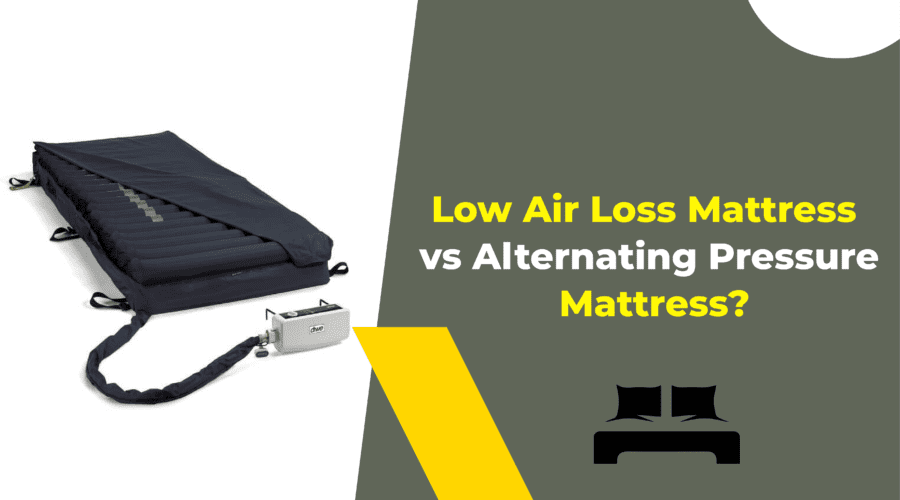 Low air loss mattresses
are designed to provide a comfortable and therapeutic sleeping surface for individuals who are at risk of developing pressure ulcers or bedsores. These mattresses use a system of air cells that inflate and deflate, allowing for the redistribution of weight and pressure on the body. This helps to relieve pressure points and reduce the risk of developing pressure ulcers, which can be painful and difficult to heal.
In contrast,
alternating pressure mattresses
use a different mechanism to relieve pressure. They have alternating air cells that inflate and deflate in a cyclic pattern, creating a wave-like motion that shifts the weight and pressure on the body. While this can also provide relief, it may not be as effective as low air loss mattresses in reducing pressure points and promoting comfort.
Low air loss mattresses
are designed to provide a comfortable and therapeutic sleeping surface for individuals who are at risk of developing pressure ulcers or bedsores. These mattresses use a system of air cells that inflate and deflate, allowing for the redistribution of weight and pressure on the body. This helps to relieve pressure points and reduce the risk of developing pressure ulcers, which can be painful and difficult to heal.
In contrast,
alternating pressure mattresses
use a different mechanism to relieve pressure. They have alternating air cells that inflate and deflate in a cyclic pattern, creating a wave-like motion that shifts the weight and pressure on the body. While this can also provide relief, it may not be as effective as low air loss mattresses in reducing pressure points and promoting comfort.
Controlling Moisture and Temperature
 Another benefit of low air loss mattresses is their ability to control moisture and temperature. These mattresses have a system of air vents that allow for the circulation of air, preventing the buildup of heat and moisture. This is especially important for individuals who are bedridden or have limited mobility, as they are more prone to developing skin irritation and infections due to excessive moisture and heat.
On the other hand, alternating pressure mattresses may not have the same level of ventilation and air circulation, leading to a higher risk of skin irritation and infections. This can also be a concern for individuals with conditions such as incontinence, as the buildup of moisture can worsen their condition.
Another benefit of low air loss mattresses is their ability to control moisture and temperature. These mattresses have a system of air vents that allow for the circulation of air, preventing the buildup of heat and moisture. This is especially important for individuals who are bedridden or have limited mobility, as they are more prone to developing skin irritation and infections due to excessive moisture and heat.
On the other hand, alternating pressure mattresses may not have the same level of ventilation and air circulation, leading to a higher risk of skin irritation and infections. This can also be a concern for individuals with conditions such as incontinence, as the buildup of moisture can worsen their condition.
Customizable Features for Individual Needs
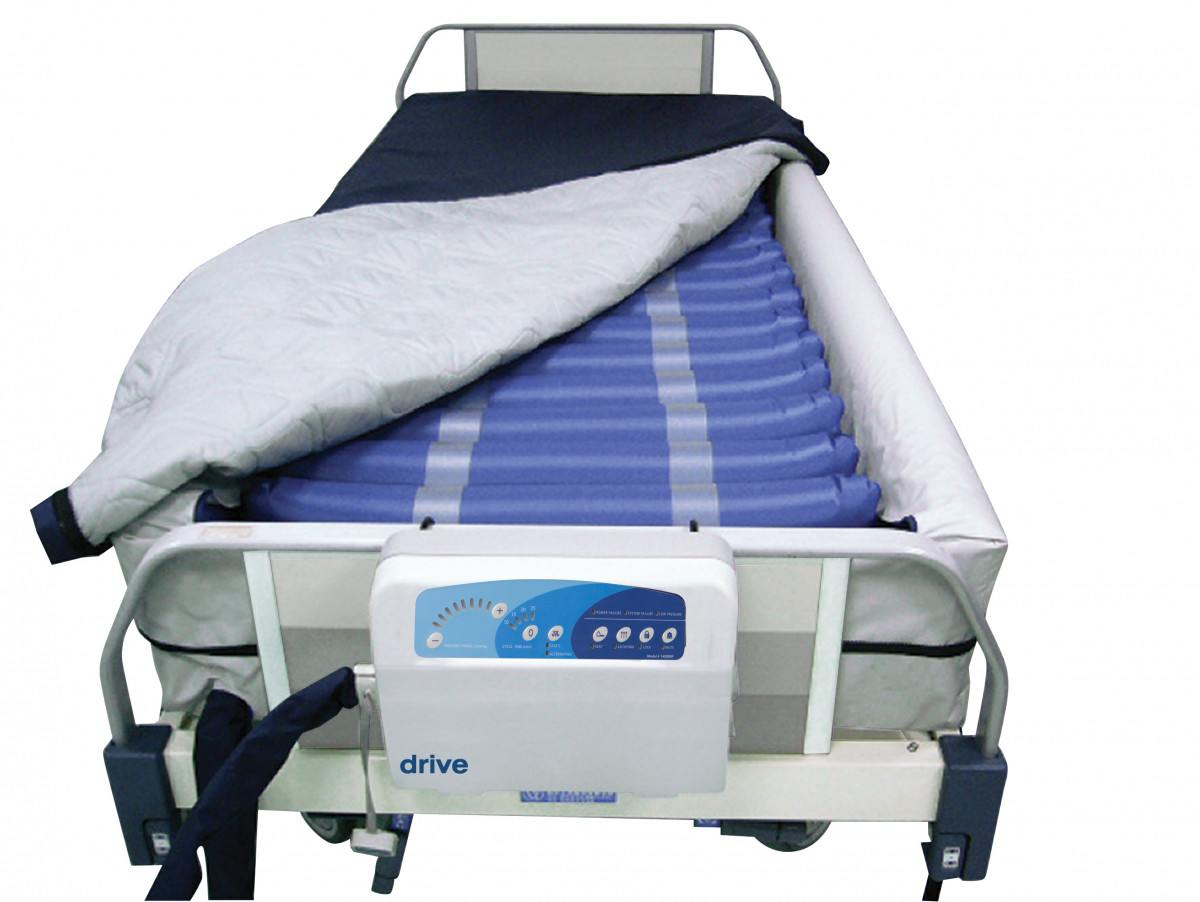 One of the main advantages of low air loss mattresses is their customizable features. These mattresses come with adjustable settings that allow for individualized pressure and weight redistribution based on the user's needs. This is especially beneficial for individuals with specific medical conditions or those who require different levels of support.
Alternating pressure mattresses, on the other hand, may not offer the same level of customization. They typically have fixed settings, which may not cater to the specific needs of each user. This can make them less effective in preventing pressure ulcers and promoting comfort.
In conclusion, while both low air loss and alternating pressure mattresses have their benefits,
low air loss mattresses
may be a better option for individuals who require a higher level of pressure relief, temperature and moisture control, and customizable features. It is important to consult with a healthcare professional to determine which type of mattress is best suited for an individual's specific needs.
One of the main advantages of low air loss mattresses is their customizable features. These mattresses come with adjustable settings that allow for individualized pressure and weight redistribution based on the user's needs. This is especially beneficial for individuals with specific medical conditions or those who require different levels of support.
Alternating pressure mattresses, on the other hand, may not offer the same level of customization. They typically have fixed settings, which may not cater to the specific needs of each user. This can make them less effective in preventing pressure ulcers and promoting comfort.
In conclusion, while both low air loss and alternating pressure mattresses have their benefits,
low air loss mattresses
may be a better option for individuals who require a higher level of pressure relief, temperature and moisture control, and customizable features. It is important to consult with a healthcare professional to determine which type of mattress is best suited for an individual's specific needs.









